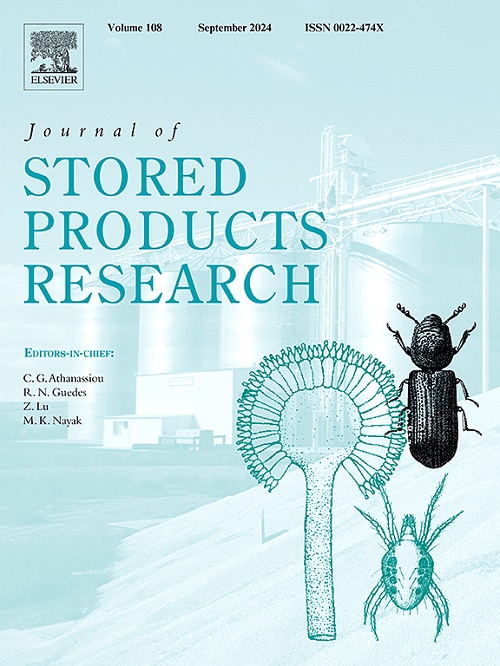Current and historical occurrence of species of the genus Sitophilus in Czech stores: 70 years perspective
IF 2.7
2区 农林科学
Q1 ENTOMOLOGY
引用次数: 0
Abstract
Not only current but also historical data are invaluable for identifying long-term trends in pest distribution and the factors driving these changes. However, detailed and updated faunistic surveys of storage pests, including key primary pests, are lacking in most European countries. This study aimed to investigate the current and historical distribution of species from the genus Sitophilus in the Czech Republic (CZ) and to identify trends in their occurrence over time. To achieve this, we collected and analyzed pest samples from 241 storage locations across CZ between 2019 and 2024 and conducted an in-depth analysis of historical pest survey reports spanning 70 years. Our findings indicate that S. granarius and S. oryzae are currently widespread in the CZ, while S. zeamais is absent. Sitophilus granarius was approximately twice as frequent in samples compared to S. oryzae. An analysis of historical records revealed significant variations in their occurrence over time. Before the 1950s, S. granarius was the only established species in the region, while S. oryzae was a rare pest, likely dependent on imported grain. During the 1960s, populations and occurrence of both species declined substantially. Recovery began in the 1970s and 1980s, during which S. oryzae temporarily became more abundant than S. granarius. However, our recent survey shows that S. granarius has again become the dominant species. The reasons for these temporal fluctuations in Sitophilus spp. populations are discussed.
目前和历史发生的物种的象属在捷克商店:70年的观点
不仅当前数据,而且历史数据对于确定有害生物分布的长期趋势和推动这些变化的因素都是非常宝贵的。然而,大多数欧洲国家缺乏详细和最新的仓储有害生物,包括主要有害生物的动物调查。本研究旨在调查捷克象属物种的现状和历史分布,并确定其随时间的变化趋势。为了实现这一目标,我们在2019年至2024年期间从CZ的241个储存地点收集并分析了害虫样本,并对70年来的历史害虫调查报告进行了深入分析。我们的研究结果表明,小麦链球菌和稻谷链球菌目前在CZ广泛存在,而玉米链球菌则没有。在样品中,谷物象乳杆菌的出现频率大约是稻谷链球菌的两倍。对历史记录的分析显示,随着时间的推移,它们的发生发生了显著的变化。在20世纪50年代之前,S. granarius是该地区唯一确定的物种,而S. oryzae是一种罕见的害虫,可能依赖于进口谷物。在20世纪60年代,这两个物种的数量和发生率都大幅下降。恢复开始于20世纪70年代和80年代,在此期间,米曲霉暂时比谷物曲霉更丰富。然而,我们最近的调查显示,黑麦再次成为优势种。讨论了象象种群中这些时间波动的原因。
本文章由计算机程序翻译,如有差异,请以英文原文为准。
求助全文
约1分钟内获得全文
求助全文
来源期刊
CiteScore
5.70
自引率
18.50%
发文量
112
审稿时长
45 days
期刊介绍:
The Journal of Stored Products Research provides an international medium for the publication of both reviews and original results from laboratory and field studies on the preservation and safety of stored products, notably food stocks, covering storage-related problems from the producer through the supply chain to the consumer. Stored products are characterised by having relatively low moisture content and include raw and semi-processed foods, animal feedstuffs, and a range of other durable items, including materials such as clothing or museum artefacts.

 求助内容:
求助内容: 应助结果提醒方式:
应助结果提醒方式:


